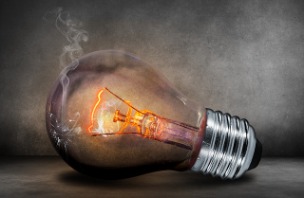
Hurricane season is a critical period for Puerto Rico, and being prepared can make the difference between safety and danger. In
Have you ever wondered about the theoretical bases that dictate the operation of instruments or tools such as electric generators?
If that is the case, let me tell you that you are in the right place. Whom JRH We are experts in the manufacture and distribution of machinery such as Electric generatorsIn addition to that, we have a large group of experts who master the complete operation of these tools from their primary bases.
If you are interested in purchasing a Electric generator for your company or if, on the other hand, you want to know more about electric generators, you can consult with one of our advisors by clicking on the following button.

"Faraday's Law" refers to two fundamental laws in electromagnetism that were formulated by British scientist Michael Faraday in the first half of the 19th century. These laws describe the relationship between a time-varying magnetic field and electromagnetic induction.
1. Faraday's First Law: This law states that when a conductor or coil passes through a changing magnetic field, an electromotive force (EMF) is induced in the conductor. The magnitude of the induced EMF is directly proportional to the rate of change of the magnetic flux and can be calculated using the formula:
emf = -dΦ/dt
Where EMF is the induced electromotive force, dΦ/dt is the rate of change of the magnetic flux, and the negative sign indicates that the EMF opposes the change in magnetic flux.
2. Faraday's Second Law or Faraday's Law of Induction: This law establishes that the magnitude of the induced current in a closed circuit is proportional to the induced EMF in the circuit and is inversely proportional to the resistance of the circuit. It can be expressed by the formula:
I = EMF / R
where I is the induced current, EMF is the induced electromotive force, and R is the resistance of the circuit.
These laws are fundamental to understanding the principles of electricity generation, transformers, coils, and many other devices and phenomena related to electromagnetism. Faraday's Law is one of the foundations of electromagnetic physics and has had a significant impact on the development of electrical and electronic technologies.
This law dates its origin in 1831 by the English scientist Michael Faraday, a law that served as the starting point for the subsequent establishment of the relationship between a magnetic field and an electric field. Thanks to this law it was possible to obtain the electromotive force given to the interaction of a magnetic field in an electric circuit.
To be more precise, this law became known thanks to an experiment that consisted of an insulated wire, which was wound around a cardboard tube, simulating a coil. To subsequently introduce a magnet inside said coil, and thus register with a galvanometer the emf induced by the magnetic field produced by the magnet when passing through the loop.
From which it could be concluded that the magnetic field represented by the magnet was equivalent to that which could be produced with another coil when connected to another current source.
We could say that Faraday's law has had special significance in the field of physics, since it has been presented as the basis for the generation of electrical energy; to which we can add his contribution to the bases of Lenz's law (Law that intends to apply the principle of conservation of energy to electromagnetic induction).
In conclusion, by means of Faraday's law, the latter had the possibility to demonstrate the relationship between magnetic fields and electric fields.
Now that we know what Faraday's law consists of, it is important to investigate a little more about its applications outside of theory, some of which are:
Although it sounds surprising, it is a fact that thanks to the findings extracted from the experiments carried out by Michael Faraday, it was possible to venture into the creation of a large number of tools and instruments thanks to electrical technology. Being the creation of the generators one of his greatest achievements.
As you may have already realized, here in JRH We are not only dedicated to the distribution of this type of machinery. Rather, we focus squarely on everything that this world encompasses, and by allowing us to be your right hand in any of your projects, you will be assured that we know what to do and how to do it.
On the other hand, I would like to present you one of our greatest innovations when we talk about generators, we refer to the diesel generator. This tool is perfect for all the needs that your home, business or company may require.
If you want to know a little more about this tool, you can check it here.

Hurricane season is a critical period for Puerto Rico, and being prepared can make the difference between safety and danger. In

Understanding how a hurricane forms allows us to be one step ahead and prevent the devastating effects of these natural phenomena. Especially in areas

In a world where energy efficiency is increasingly a priority, learning to save energy has become a crucial need for both

In a world that doesn't stop, the need for a reliable and continuous power source is more crucial than ever. At JRH Power

Have you ever wondered how electricity becomes a constant in our lives, even in the most critical moments? At JRH Power

In our modern world, where electricity is vital, power outages are a frequent reality. Know how to connect a generator to the house